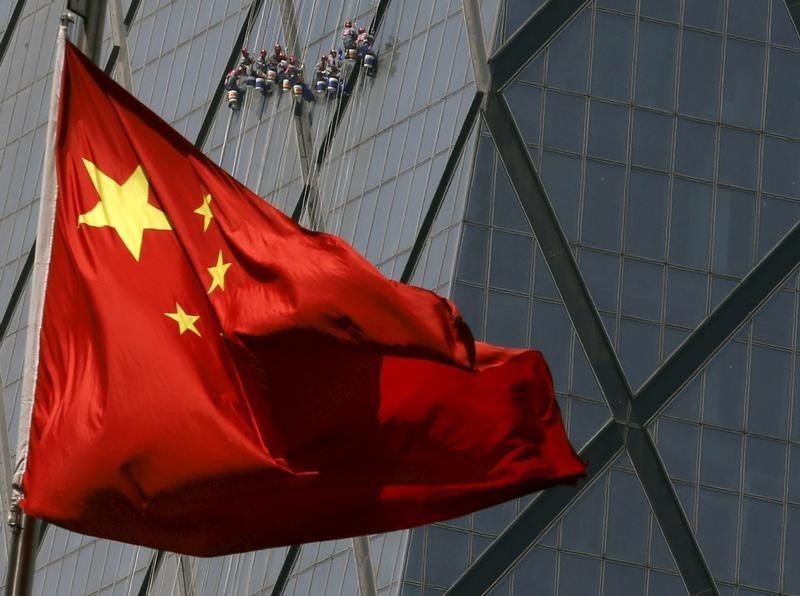(Bloomberg) -- Chinese investors are not overly bothered by a deteriorating outlook in the manufacturing sector, mostly because they expect Beijing to come to the rescue.
Stocks fluctuated and the yuan pared a drop as many observers interpreted weakness in the economy as a sign the government will roll out some stimulus. Data released Friday morning by the National Bureau of Statistics showed that China’s manufacturing purchasing managers’ index dropped to 49.4, worse than the 49.9 forecast in a Bloomberg survey of economists.
Citic Securities Co. and Bank of America Merrill Lynch (NYSE:BAC) have already flagged the possibility that China could cut the reserve requirement ratio as liquidity tightens. The People’s Bank of China added a net 430 billion yuan ($62 billion) into the banking system this week, the most since mid-January. Those injections were seen as a response to market jitters resulting from the government’s takeover of a Chinese lender -- the first in 20 years.
Sentiment has also been damped by the China-U.S. trade dispute, which doesn’t appear to be headed toward a resolution anytime soon. That has sent the yuan toward its worst month since July, and the benchmark Shanghai Composite Index toward a 5.7% monthly drop. Foreign investors are in line to sell about 53 billion yuan of Chinese equities this month, smashing last month’s record of 18 billion yuan.
Market watchers seem even more convinced after today’s data that policy makers will offer some kind of support. Here’s what they had to say:
Westpac Banking Corp. (Frances Cheung, head of Asia macro strategy)
- The PMI suggests a weaker growth outlook, which may lead to more fiscal support
- With huge amounts of negotiable certificates of deposit and medium-term lending facilities maturing in the next couple of months, a near-term reserve requirement ratio cut cannot be ruled out
- The PBOC appears determined to ensure there’s enough liquidity for the market
China Construction Bank Corp. (Stephen Chiu, senior currency and rates strategist)
- PMI data is consistent with China and global growth; the slowdown and trade war are putting pressure on the manufacturing sector
- A targeted RRR cut is needed; it will probably be implemented in steps given the PBOC did one earlier in May
Citic Securities Co. (Ming Ming, head of fixed-income research)
- Policy needs to be adequately loose as there’s a relatively large amount of MLF maturing in June so that will tighten liquidity; an RRR cut will be more effective here
- If there isn’t a cut and the PBOC just injects liquidity through MLF, there will be greater stress on the market
- Policy support will also boost Chinese government bonds
China International Capital Corp. (Liang Hong and Eva Yi, economists)
- There’s greater uncertainty in foreign demand for production and this is likely to continue in June, which necessitates looser monetary policy
- Investors should continue to monitor how concern about credit risks in small and medium-sized banks will affect domestic demand
Northeast Securities Co. (Guo Feng, head of the wealth management department)
- China’s economic growth may decelerate further in 2Q and 3Q on the trade war
- The market is looking for the government to launch more supportive economic policies
- The Shanghai Composite Index may continue to trade range bound between 2,800 and 3,000 until mid-June
- NOTE: Shanghai Composite traded around 2,899 as of 2:15 p.m. in Hong Kong
Huachuang Securities Co. (Zhou Guannan, analyst)
- Two consecutive months of declines in the PMI shows that China’s economy is still under pressure
- May’s manufacturing PMI was mainly weakened by the trade war and oil prices
- Sees less risk in government bonds; drop in U.S. bond yields bodes well for local notes
